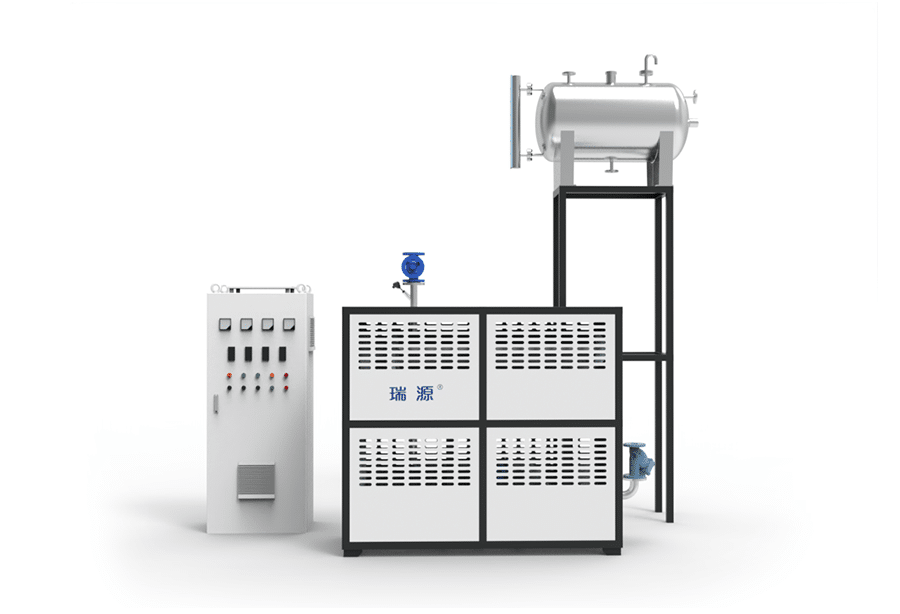Thermal oil heaters https://8ruiyan.com/en/all-organic-heat-carrier-boilers/are widely used in industries such as chemical processing, food production, and textiles. Electric heating thermal oil heaters, in particular, are favored for their precise temperature control, energy efficiency, and environmental friendliness. However, when first used or after an oil change, many users ask: “Does an electric heating thermal oil heater need boiling-in?”
The answer is “Yes!” Boiling-in (also called “dehydration and light component removal”) is a crucial step to ensure the safe and efficient operation of a thermal oil system. Today, we’ll explore why boiling-in is necessary, how to perform it correctly, and key precautions.

1. Why Does an Electric Heating Thermal Oil Heater Need Boiling-in?
1. Removing Moisture to Prevent Hazards
New thermal oil or systems that have been idle for a long time may contain trace amounts of moisture. If heated directly to high temperatures, the moisture will rapidly vaporize, causing a sudden pressure surge that can lead to oil spraying, explosions, or other safety risks.
2. Eliminating Light Components to Avoid Air Locks
Thermal oil contains light-boiling-point substances (low-boiling components) that can vaporize at high temperatures, potentially causing:
- Cavitation in the circulation pump, affecting flow rate
- System pressure fluctuations, leading to unstable temperature control
- Air locks in pipelines, reducing heat transfer efficiency
3. Stabilizing Oil Quality to Extend Service Life
Gradual heating allows the thermal oil to age slowly, forming a stable molecular structure that minimizes coking and carbon buildup, thereby extending its lifespan.
2. Step-by-Step Boiling-in Process for Electric Heating Thermal Oil Heaters
The core principle of boiling-in is “low-temperature dehydration, medium-temperature light component removal, and high-temperature stabilization.” The detailed steps are as follows:
1. Low-Temperature Dehydration Stage (80–120°C)
- Start the circulation pump and heat the oil at a rate of ≤50°C/h until it reaches 80–100°C (refer to the oil manufacturer’s guidelines).
- Hold the temperature for 8–12 hours, releasing moisture through the vent valve until system pressure stabilizes.
2. Medium-Temperature Light Component Removal (120–150°C)
- Continue heating to 120–150°C at a rate of ≤20°C/h.
- Monitor the expansion tank to ensure no violent bubbling occurs, and release light components through the vent valve.
3. High-Temperature Stabilization Stage (Gradually Raise to Operating Temperature)
- Increase the temperature to the target operating level (e.g., above 200°C) at a rate of ≤30°C/h.
- Hold the temperature for 1–2 hours every 50°C increase to ensure oil stability.
4. Post-Boiling Inspection
- Check the filter and clean or replace it if necessary.
- Test the oil quality—if excessive impurities are found, partially replace the oil.
3. Precautions During Boiling-in
✅ Continuous Monitoring: Personnel must be present to observe pressure, temperature, and flow rate.
✅ Slow Heating: Avoid rapid temperature increases, which can cause oil cracking or coking.
✅ Proper Venting: Ensure vent valves are open to prevent air locks or pressure fluctuations.
✅ Oil Compatibility: Different thermal oil brands may require specific dehydration temperatures—always follow the manufacturer’s instructions.
4. When Can Boiling-in Be Skipped?
- Topping up with the same type of thermal oil (if no moisture or contaminants have entered the system).
- Restarting after a short shutdown (if the oil has not absorbed moisture, slowly heat while monitoring).
However, for safety, always perform boiling-in when commissioning a new system or after an oil change.
5. Conclusion
An electric heating thermal oil heater must undergo boiling-in (dehydration and light component removal) during initial startup or after an oil change to prevent safety hazards and ensure optimal heat transfer efficiency. Proper boiling-in extends oil life and maintains system stability.
If you’re using a thermal oil heater, bookmark this guide and consult your equipment or oil supplier for a customized heating procedure!
📢 Have you performed boiling-in on your thermal oil heater? Share your experience in the comments! 🔥
For technical inquiries, contact Ruiyuan’s official support team!
📞 📞 📞
Whatsapp:86-19106101570
wechat:86-19106101570
email:nieyili@cnryan.com
